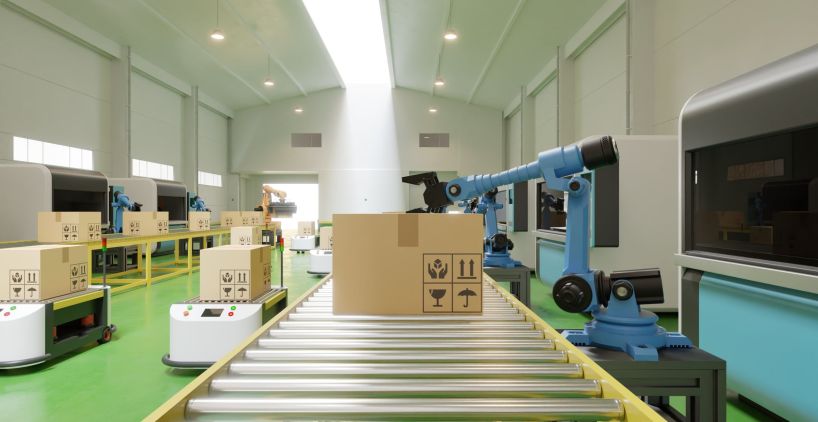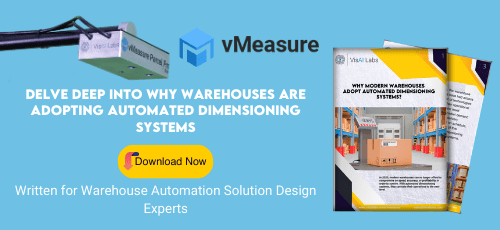Summary
E-commerce is the recent wave flooding across the world. Digitalization’s growth is proliferating, pushing most warehouse owners to procure new vertical advancements, and this is the case where smart robots’ deployment has begun. This blog gives you a better insight into how your warehouse can be made more intelligent by smart robots.
Customer persona
- Logistics Specialist: Working with suppliers and consumers to complete the shipment, knowing the Supply Chain and Logistics market patterns and the effect of AI in their core domain.
- Operations Specialist: Ensure that the warehouse is managed smoothly and efficiently by processes and regular functions. Focus on the enhancement of productivity through automation and improvement of business processes
- Warehouse automation manager: Understanding how AI is changing warehouses and how it is possible to make their work simpler and ensures the safe and successful storage and delivery of warehouse goods.
Introduction
Todays’ warehouses are undoubtedly becoming smarter than ever, and the warehouse robots are seamlessly working without human assistance. ECommerce’s rapid development has been urging warehouse operations to implement AI-enabled automation systems for the last few years. Before diving deep into the idea, let us know about a smart warehouse and the few criteria to be considered before the industry adopts the automated warehouse solution.
What is a smart warehouse?
The smart warehouse is the endpoint of warehouse automation – meaning combining different developments to minimize many iterative and hand-held warehouse operations.
Below are some of the key criteria to take into account before adopting the warehouse solution:
Agility
Agility in the warehouse refers to the process of quickness, flexibility, competence, and handling multiple redundant operations.
Data visibility
As the technologies continue to outgrow, we need to have a clean database. The supply chain and warehousing activities may become intricate in the coming days, and we need to keep track of every process. So this is again a paramount requirement before warehouse automation is adopted.
Scalability
The process of looking at future-preparedness, meaning it doesn’t matter whether you’re a star-focused start-up or an existing organization that is getting ready to revamp with smarter growth. It will be excellent if you have a concrete strategy for the scalability of your business.
Benefits of adopting AI-enabled warehouse solutions:
1. Improve labor efficiency:
By eliminating repetitive manual tasks using automation, we can quickly reduce workers’ numbers and add more value to the remaining employees. Besides, the automated warehouse can perform more warehouse duties smoothly without any shift time.
2. Enables fast turnaround times:
By incorporating automation in the warehouse and significantly improving customer service, we can respond quickly to online orders.
3. Scales up warehouse transparency:
The more your client understands your warehouse inventory’s levels and conditions, the more responsive the contact will be. The automation technology can produce full-time insight into the warehouse operations and inventory information.
4. Improves scalability:
With the right warehouse automation, we can rapidly simplify warehouse operations, minimize labor costs, and modifies various warehouse functions.
5. Uplifts adaptability:
Forward-thinking can benefit in space utilization for future-oriented purposes. Smart warehouses can intensify the ability and willingness to adjust operations according to changing requirements.
When you plan to invest more in automation, you should collect relevant information like forecasting reports and customer demands before adopting technology into the warehouse.
Smart technologies paving the way for warehouse automation
Over the last decade, the utilization of warehouse management systems has expanded from approximately 32% to almost 75%. In the coming days, 53% of warehouse employees would plan to invest heavily in technical developments. Some of the advancements include real-time surveillance systems, automated dimensioning solutions, advanced drone technology, wearables, barcode scanners, and autonomous mobile robots.
Effective warehouse solutions to deploy during the initial phase of warehouse automation
Automated dimensioning solution
The technology developed to calibrate the dimensional information such as length, breadth, height, width, and weight of varied sizes like cubes, cuboids, polybags, and other irregular shapes. These dimensioners are further categorized according to the industrial scale into large freight or pallet and parcel dimensioners.
The large freight dimensioners can calculate the measurement of pallets and crated freights. These dimensioners can be paired with barcode scanners, weighing scales, and 2D cameras To picture the full load image before the shipment.
The parcel dimensions record the dimensional information of individual boxes, packages, and cartons of varying sizes and shapes.
Here are five noteworthy reasons to deploy the automated dimensioner to your warehouse:
- Financial savvy:
Without the investment, you cannot procure any equipment in the warehouse. Therefore, before accepting it in real-time use cases, it is often essential to check its price.
- Simple integration:
Analyzing the working efficiency of the equipment is salient. It would be better to select equipment with a versatile structure to integrate with any preferred future-readiness systems.
- Improved customer service:
You can easily create trust in customers with precise measurements, which encourages customers to stick to the brand.
- Optimized storage space:
For a warehouse, money is all about optimized space and time. The automated dimensioning solution calculates the freight and parcels’ exact dimensions in less than a second to quickly assign the product’s warehouse area.
- Improved precision and reduced manual errors:
Not only does the automated dimensioning solution save time, but it also gives you money! These dimensioners can generate accurate dimensioning information to cut down the conventional (hand-held) dimensioning method.
Autonomous mobile robots (AMR)
The autonomous mobile robot is constructed with the latest navigation advancement that does not require cables, tape, magnets, or other assistance like conventional autonomous guided vehicles (AGV). These AMR are trained with different datasets to create their map with the operating environment, onboard sensors, and cameras to process their surroundings, self-locate, and navigate the location based on real-time conditions.
Here are four powerful reasons for efficiently bringing in autonomous mobile robots to revamp warehouse activities:
- Reduces walk time:
Staff should roam around the warehouse in traditional warehouses to identify and pick the products and then walk back to the sorting station. And this back and forth walks time increases the overall time spent on picking assignments.
- Directs workflow to boost precision and efficiency:
The AMR uplifts not only the picking process but also helps the employees by navigating the products’ location, displays the product quantity, and assists employees to improve the precision and efficiency during the order fulfillment process.
- Enables flexible capital expenses:
There is no need to mount tracks and magnetic strips, and forklifts by deploying autonomous mobile robots to the warehouse.
- Augments human labor:
We can schedule other high-value tasks for employees by bringing autonomous mobile robots into the warehouse.
Drone technology
Over the last few years, the deployment of AI-enabled drone technology has increased. By investing more in robotics and automation, central warehouses aim to improve warehouse potency. These drones are explicitly purchased for three main applications in the warehouse: inventory control, inspection and tracking, and indoor intra-logistics.
Here are the benefits of deploying drone technology to the warehouse include:
- Data accuracy:
Captures high-quality aerial photographs, scans product barcodes and generates the data with a list of in-house product details and its location in the warehouse.
- Increased efficiency:
Drone technology can enhance different warehouse operations such as regular cycle counts, collect data from real-time inventory, can increase the quick search for products.
- Higher inspection and monitoring:
drones can be a perfect alternative to replacing warehouse manual monitoring and inspection processes, as they can conduct various detection operations such as roofs, shelves, walls, pallet placements, and ceilings.
Summing Up
Warehouse automation will replace the conventional warehouse in the coming days. Unless the automation processes are stabilized, the efficiency of the automated warehouse systems would be intricate. But you need to take installation costs and the cost of maintenance incredibly before deploying the automation.



